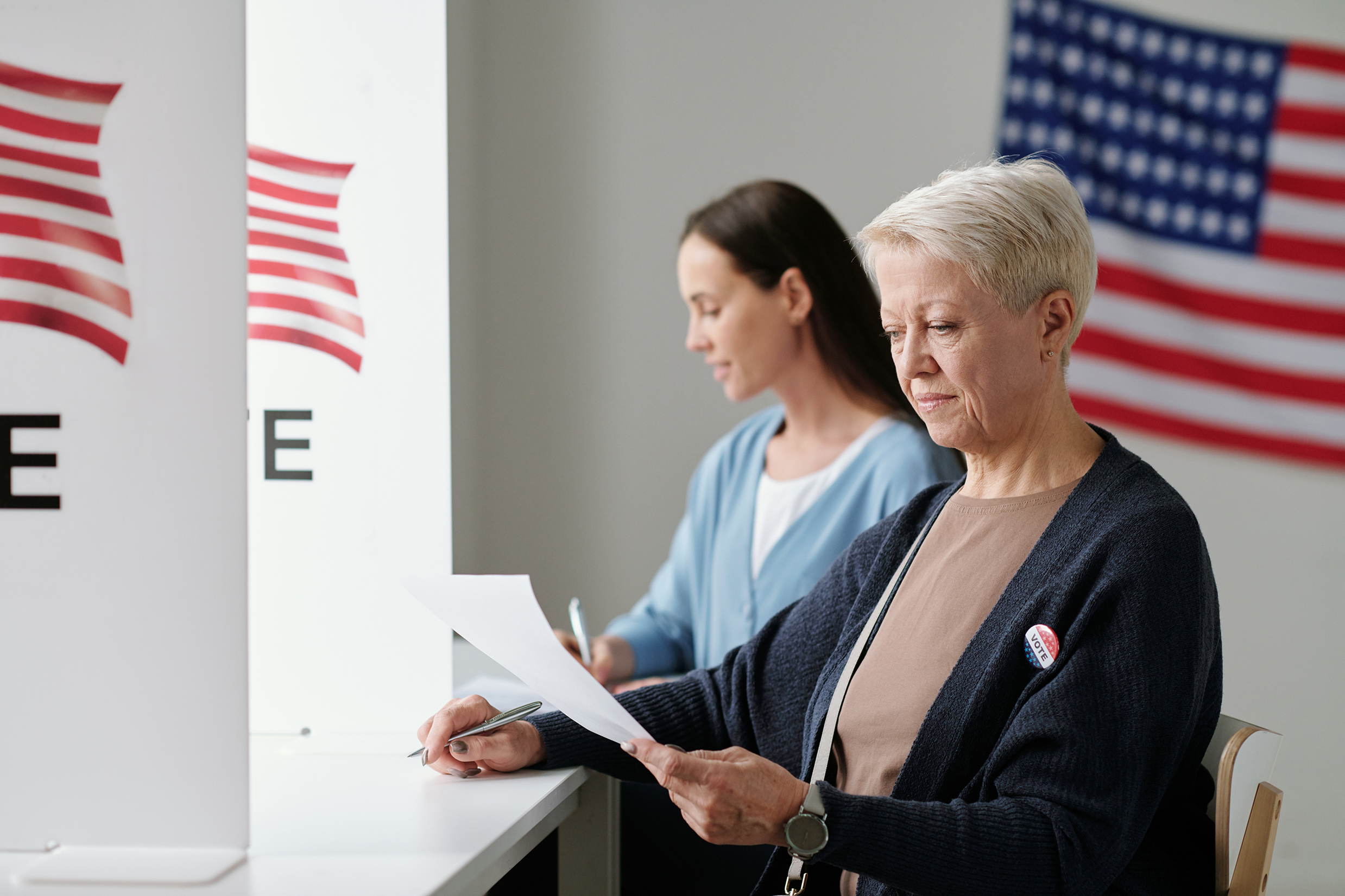Predicting Civic Behavior
Galvanize Action’s award-winning research team has just wrapped up their modeling survey! In this research project, we asked 1,500 moderate white women across the country roughly 100 different questions that tell us about their unique traits, beliefs, and stances on key issues.
This fascinating research shows us which variables are connected to civic behavior. That helps us understand factors like vote choice, what type of attitude or belief predicts what type of vote, and which points in this system are levers that can be pulled to enact change. We’ve mapped our understanding of this system out for you below.
Note: If you’re a long-time reader, you may notice a few differences between this vote driver map and the previous versions we’ve published. We’re always researching and building upon what we know about moderate women to make sure our understanding reflects current conditions.
Let’s start with the full map. Every time you see an arrow, you can understand it as this helps us predict that. A simplified example: If we know a moderate white woman’s level of internalized sexism and level of trust in government, we probably can guess her past voting behavior. If we know her past voting behavior and beliefs on abortion, it can help us predict her 2024 voting behavior.

That’s a lot of information, so we’ll work backward from voting behavior.
Our modeling survey shows us that if you want to know how a moderate woman will vote in 2024, you should primarily look at two things:
1) her past voting behavior
2) whether she holds progressive beliefs about an array of key issues
Let’s start with past voting behavior. If someone voted for one party in the past, it makes sense to predict they’d vote for that party in the future. But what went into all those past decisions to start with? Attitudes and beliefs! Looking at the far left side of the map, we can see that internalized and benevolent sexism, racial resentment, colorblindness (a form of racial resentment), ideas about social significance, just world view, and levels of trust in government all factor in. Each of these traits is something we can quantify and measure. Everyone holds most of these traits to some extent!

All of these traits are relevant, but some appeared to be a little more significant than others. Our modeling showed us that internalized sexism, racial resentment, and especially trust in government are most likely to factor in. For example, someone who trusts the government a lot is much more likely to vote one way. Someone who distrusts the government a lot is more likely to vote a different way.
That part of the system accounts for past voting behavior, but that is only half of the story. These same traits also predict the type of beliefs a person will hold, and whether that person holds progressive beliefs then predicts future voting behavior.
We’ve broken out the specific progressive beliefs we looked at so you can see what they are, but don’t get bogged down in the details. When we’re looking at vote choice, it’s more important to know if a woman holds a suite of these progressive beliefs than it is to understand which specific policies she supports. Of course, the nuances here give us valuable insights into other aspects of our programming and allow us to support partners who focus on things like gun control and healthcare.
Our modeling research highlighted a few points in this system where Galvanize Action and our partners can make small changes to more effectively move moderate women toward progress on these issues.
Our advice for partners:

Increase trust in the government. It’s important to address beliefs about the role the government should play in our lives and build trust in our government. One way we do that is through proven messages like this that highlight what the government has done to help regular Americans:
White women: +7pp
Moderate white women: +19pp
Address beliefs around fairness and deservingness. From colorblindness driving views about marginalized groups getting “special treatment” to internalized sexism impacting beliefs about who “deserves” an abortion, deservingness is a critical barrier to overcome. Here’s one way we’re helping moderate women expand their idea of who deserves support:
Voters overall: +15pp
Moderate voters: +11pp
Speak to chaos and help calm anxieties. All of our recent research shows us that moderate women are feeling a sense of chaos and instability. Dobbs created uncertainty where Roe v Wade had offered us decades of secure rights. Inflation and childcare costs are making women feel economically unstable and anxious about making ends meet. Some feel out of control because they think conversations about race or gender identity are moving faster than they can handle.
Here’s an example of how we can make messages that calm some of the anxieties around immigration that are being stirred up by anti-immigration narratives:
White women: +12pp
Moderate white women: +12pp
Reduce internalized sexism, especially when talking about reproductive freedom. This is connected to ideas about deservingness and responsibility, and that comes up most clearly when we see moderate women support abortions in drastic circumstances (when the need for an abortion is seen as “not their fault”) but not in other circumstances. Messages like this help our audience see that women can make their own decisions about their bodies and in all aspects of their lives.
White women: +7pp
Moderate white women: +9pp
You can see more ads like these and keep reading about how our research informs our strategy in the Art & Science of Persuasion Playbook!




